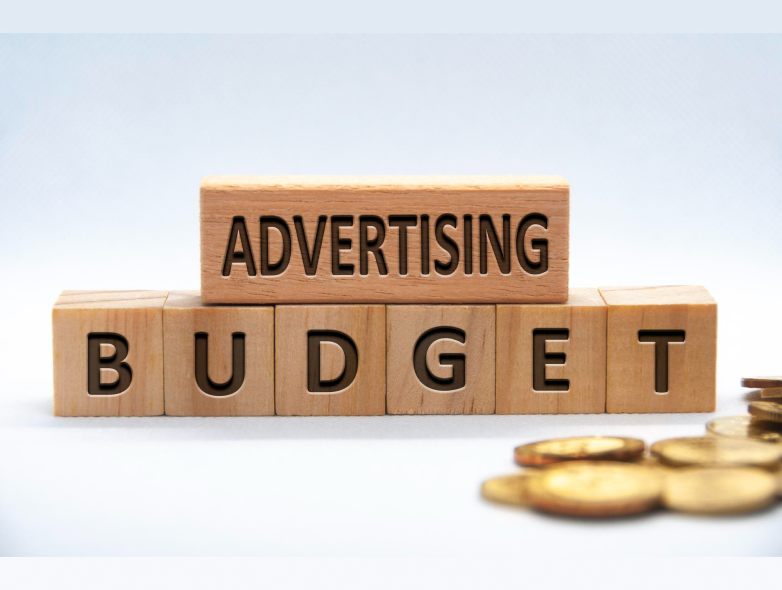Google Ads vs Meta Ads: Which Platform Delivers Better ROI for Businesses in 2025?
Every marketing budget in 2025 faces the same challenge: choosing between Google Ads and Meta Ads for the best return on investment. These two giants set the benchmark for online paid advertising, but their strengths cater to different business goals. In 2025, fresh performance data shows that Google Ads excel at driving high-intent conversions, while Meta Ads win with highly targeted awareness and engagement.
Decision-makers can't afford to guess where their ad spend works hardest. This analysis cuts through common claims about "Google Ads vs Meta Ads" using up-to-date figures and real-world outcomes. You'll see which platform drives stronger ROI according to business objectives—so you can invest smarter. For more on optimizing paid campaigns and maximizing every rupee spent, explore the Clickbox PPC Packages designed for growth-focused brands.
How Google Ads and Meta Ads Work in 2025
Grasping the basics of how Google Ads and Meta Ads operate helps you decide which is a better fit for your business objectives. In 2025, each platform builds on its roots—Google excels in harnessing explicit user intent, while Meta champions granular audience segmentation based on interests and behaviors. Their core mechanics remain consistent, but evolving tools and robust data shape how advertisers reach, engage, and convert prospects.
Audience Targeting and Placement
Meta Ads dominate with interest-based and demographic targeting. Advertisers tap into vast pools built from user behaviors, activities, demographics, and connections. Features like lookalike audiences use your best customers' profiles to find new, similar prospects. Custom audiences retarget users based on website visits, app engagement, or existing customer lists. This focus makes Meta Ads powerful for driving product discovery, nurturing brand engagement, and scaling reach even when purchase intent is low or latent.
Google Ads, in contrast, centers on intent. Using keywords, search queries, and contextual signals, campaigns reach people actively seeking information or solutions. Advertisers use in-market segments to pinpoint users ready to buy in specific categories. Google also offers demographic targeting but remains stronger at capturing high-intent actions, such as searches for a service or comparing products.
Where ads appear differs too:
-
● Meta Ads: Integrated across Facebook, Instagram, Messenger, and Audience Network feeds. Placement can be automatic or tailored to surface ads in stories, reels, or right in-feed.
-
● Google Ads: Visible on Google Search, YouTube, Gmail, and Google Display Network partner sites. Ads appear alongside search results, in banners across the internet, or as pre-roll video on YouTube.
Matching platform strengths to your goals is key. If you want to accelerate direct sales for motivated buyers, Google captures those ready to convert. For raising awareness or engaging a specific lifestyle or affinity group, Meta outperforms by shaping brand sentiment and nurturing future demand.
Explore ways to maximize your ad targeting further in Ecommerce Online Marketing Tips or discover how improving your Google Ads Quality Score sharpens performance.
Ad Formats and User Experience
Meta Ads win on visual storytelling. Dynamic formats—single image, carousel, video, stories, reels, and collection ads—put brands front and center in an immersive, scroll-friendly environment. Visual-first ads encourage browsing, likes, shares, and interaction, which nurtures trust and brand recall. Short videos, swipeable carousels, and interactive elements help advertisers stand out and guide users from inspiration to action.
Google Ads cover a broad array of formats, each designed for specific moments in the buyer’s journey:
-
● Search Ads: Text-based, serve users precisely when they enter relevant queries.
-
● Display Ads: Image and rich media banners placed across millions of websites.
-
● Shopping Ads: Highly visual, showing product images, titles, and prices directly in search results.
-
● YouTube Ads: Skippable or non-skippable video ads layered into YouTube’s massive video ecosystem.
User experience varies:
-
● Meta: Seamless, personal feeds and stories, with ads blending into organic content. Ad interruptiveness is low, but attention spans are short.
-
● Google: Prominent placement at moments of need, from search to video. Greater intent, but more competitive, especially for transactional keywords.
Effective selection of ad formats can transform clicks into conversions, especially when formats match both the product type and audience preference. Visual products draw more engagement on Meta; high-consideration or complex services may convert better through Google’s intent-driven ecosystem.
If your ad strategy needs a deeper look at formats, read about the Effectiveness of Pay-Per-Click Marketing or get inspiration from the Top Marketing Strategies for Startups—both highlight the impact of matching format to business goal.
ROI Comparison: Google Ads vs Meta Ads in 2025
The race for digital ad efficiency continues in 2025, as businesses put Google Ads and Meta Ads head-to-head for the best ROI. While both platforms claim to boost returns, the mechanics behind each can pull results in different directions depending on audience, creative, and industry focus. Let’s break down the core numbers and see what these differences mean for your ad budget.
Cost Structure and Return on Ad Spend

Advertising on Google and Meta comes with unique cost structures that shape ROI from the start.
-
● Meta Ads: Average CPCs (cost-per-click) typically range from $0.50 to $2.00, while CPMs (cost per thousand impressions) usually run between $7 and $10. Cost per acquisition (CPA) can fall well below $10 for certain industries. For high-performing eCommerce brands, Meta Ads are reporting an average 6:1 return on ad spend (ROAS), meaning for every $1 invested, $6 returns to the business. This data holds across the latest benchmarks and supports why Meta often commands a bigger slice of the eCommerce ad budget. See updated numbers in this comprehensive Meta Ads cost breakdown.
-
● Google Ads: Average CPCs are generally higher, currently between $1.50 and $3.00 depending on industry. CPMs can be comparable or slightly above Meta’s, with popular B2B keywords and high-intent verticals sometimes exceeding $5 per click. The average ROAS across sectors is around 4:1. In practical terms, Google’s cost is justified by quality clicks from high-intent users—buyers partway down the funnel and more likely to convert.
Optimization features drive ROI on both sides:
-
● Google Ads favors precise targeting with negative keywords, allowing advertisers to exclude irrelevant search traffic. This control keeps budgets focused on ready-to-convert prospects, cutting wasted spend.
-
● Meta Ads thrive on creative experimentation. Dynamic creative testing, retargeting, and audience segmentation refine who sees your ad and how often, pushing ROAS higher with ongoing tweaks.
Advertisers who understand their platform-specific optimization tools, such as Google’s keyword exclusions and Meta’s A/B creative tests, consistently outperform less-experienced peers. For those who want to maximize every rupee, packages like the Clickbox PPC Packages offer professional guidance for campaign optimization.
Industry Variations: eCommerce, B2B, and Services
ROI on Google Ads vs Meta Ads shifts dramatically as you move between eCommerce, B2B, and service sectors.
-
● eCommerce: Brands in apparel, beauty, and lifestyle regularly win with Meta’s creative-focused formats. Carousel ads, Instagram reels, and story placements turn impulse shoppers into buyers at a lower cost. These brands see higher click-through rates and more efficient conversions—especially for products aimed at a visually driven audience. Studies in 2025 confirm that Meta’s creative tools and scaling options (like broad audience campaigns) give eCommerce brands an edge on both cost and volume.
-
● B2B and High-Ticket Sectors: These industries gravitate to Google Ads for capturing high-intent leads. Buyers searching on Google often know what they want, and the platform’s targeting lets advertisers pinpoint users by company, job title, or problem. While CPCs are higher, the value from closing a deal justifies the ad spend. B2B companies consistently report that, while volume may be lower than Meta, lead quality and conversion rate on Google more than make up the difference, resulting in a higher overall ROI for large purchases and services. Additional sector benchmarks are highlighted in this ROI platform comparison.
-
● Local and Service Businesses: This group sees mixed outcomes. Services that are searched for on-demand—think urgent home repairs, legal help, or medical appointments—find their best customers on Google. Conversely, services that benefit from brand presence or repeat engagement (gyms, classes, salons) can build loyalty with Meta’s affordable impression costs and audience targeting.
These shifts highlight the importance of the sector when considering the “Google Ads vs Meta Ads” question. ROAS is higher on Meta for fast-moving products and impulse buys; Google drives stronger returns for high-consideration services and B2B.
The ROI equation isn’t just about cost per click or conversion—it’s about aligning platform strengths to your audience and offer, then optimizing for returns. Balancing both can fill in the gaps; businesses that test and refine their spending typically outperform those who rely on guesswork. For strategic planning help, dig deeper into how different industries perform in this 2025 analysis on industry ROI differences.
Choosing the Right Platform for Your Business Goals
Setting clear goals drives the success of any paid advertising in 2025. Google Ads and Meta Ads both deliver strong results—when matched to the right business objectives. Making the best choice starts by defining what you want most: brand awareness, customer engagement, or measurable conversions.

Optimization Tips for Higher ROI
Improving your return on ad spend requires discipline, not luck. Here are practical methods to raise performance—whether you run campaigns on Google Ads, Meta Ads, or both:
-
● Test Regularly: Launch A/B tests for ad creatives, audiences, and placements. Small changes often mean big gains in click-through rates.
-
● Use Data-Driven Budget Shifts: Monitor performance weekly. Move budget to campaigns and platforms that show better cost per conversion or higher ROAS.
- ● Adopt Advanced Campaign Types:
- ● Meta Advantage+: This tool lets Meta learn which creatives and audiences perform best, making real-time adjustments to boost results.
- ● Google Performance Max (PMax): Google automated bidding, placements, and audience targeting using AI, optimizing for conversions across search, display, and YouTube.
● Segment Audiences: Avoid blanket targeting. Create different campaigns for new prospects, repeat customers, and warm leads.
● Retarget for Efficiency: Retarget site visitors and social engagers with tailored messages to capture lost sales.
Routine testing and careful data tracking will separate high-performing campaigns from average ones. For a step-by-step breakdown of tested methods.
Blended Strategies for Best Results
Many brands get the best results from a blended budget split. This approach combines the visual, interest-first power of Meta with the intent capture strengths of Google:
-
● Start with a 65% Meta, 35% Google Split: Meta excels at growing reach and nurturing buyers who aren't actively searching. Reserve a strong share for awareness and creative storytelling. You can link "creative storytelling" to: https://en.wikipedia.org/wiki/Visual_storytelling
-
● Dedicate Google Spend to High-Intent Actions: Use Google Ads to intercept people searching for your product or similar options. These campaigns often show higher conversion rates
- ● Align Spend with Business Goals:
- ● Choose Meta for launching new products, building loyalty, and selling impulse items.
- ● Use Google when capturing demand from users already researching or comparing goods.You can link “spend with business goals” to: Marketing Mix Modeling – Wikipedia
-
● Integrate Campaigns: Use consistent visuals and messaging on both platforms. Retarget users across channels for full-funnel coverage. You can link “retarget users” or “cross channels” to: FTC – Advertising and Marketing on the Internet
An integrated strategy fills gaps and stretches ad spend further—supporting both top- and bottom-funnel goals. Market leaders consistently review their mix monthly, shifting budget to hit key metrics and maximize ROI. For full-service guidance and to explore expert-managed solutions, see Clickbox Digital Marketing Packages.
Building an adaptive, data-first plan ensures your ad spend supports current goals, while having the flexibility to adjust as business needs change.
Choosing the right mix—and reviewing results often—keeps brands one step ahead in the Google Ads vs Meta Ads race for ROI.
Conclusion
Google Ads vs Meta Ads in 2025 is not about naming a one-size-fits-all winner. The best ROI comes from a strategy built on clear goals, regular testing, and adapting spend between platforms based on real results. Pairing Google's intent-driven reach with Meta's audience-first engagement covers both immediate conversions and long-term brand growth.
Review your goals, track your campaign data, and adjust your mix as outcomes shift. For many businesses, success means testing both platforms before locking in a budget split. Explore how innovations like AI tools for digital marketing can improve efficiency and returns in your campaigns.
Which mix works for you? Share your results or reach out for help tailoring your ad plan for 2025. Your input adds value and sparks fresh insight.
John Click
Digital Marketer | SEO Copywriter | Content Strategist
Experienced digital marketer with a proven track record in creating compelling content that not only engages audiences but also drives conversions and enhances SEO visibility. My expertise extends beyond marketing strategy to crafting persuasive narratives that resonate with your target audience. I combine data-driven strategies with captivating writing to deliver measurable results, ensuring your brand shines in the digital landscape.
John Click
Digital Marketer | SEO Copywriter | Content Strategist
Experienced digital marketer with a proven track record in creating compelling content that not only engages audiences but also drives conversions and enhances SEO visibility. My expertise extends beyond marketing strategy to crafting persuasive narratives that resonate with your target audience. I combine data-driven strategies with captivating writing to deliver measurable results, ensuring your brand shines in the digital landscape.




 Digital Marketing
Digital Marketing


 Digital Marketing
Digital Marketing Digital Marketing
Digital Marketing



